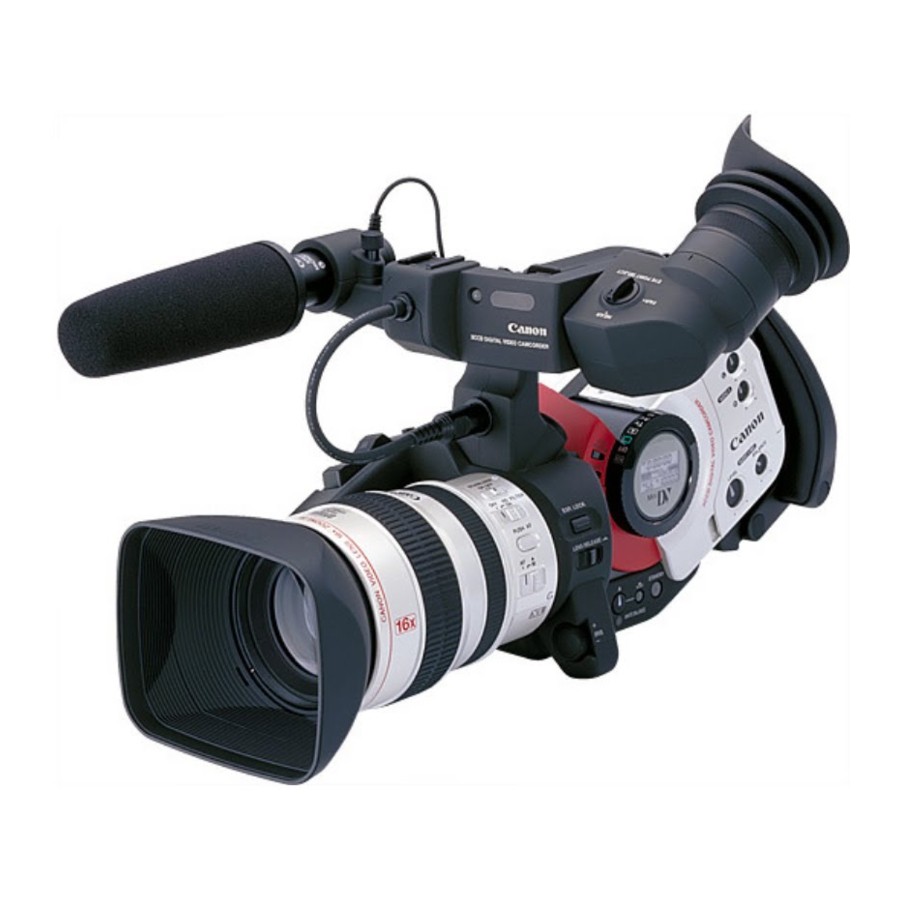Canon XL 1 Kullanıcı Kılavuzu - Sayfa 23
Video Kamera Canon XL 1 için çevrimiçi göz atın veya pdf Kullanıcı Kılavuzu indirin. Canon XL 1 26 sayfaları. Camcorder
Ayrıca Canon XL 1 için: Broşür (8 sayfalar), Teknik Özellikler (1 sayfalar), Talimatlar (2 sayfalar), Broşür ve Teknik Özellikler (8 sayfalar), Kullanıcı Kılavuzu (9 sayfalar), Manuel (9 sayfalar)

broadcast television. Because it is digital and uncompressed, it can be edited and
copied many times with no detectable loss of quality.
• Digital audio There are many different digital audio formats. Consumer-grade
digital audio is carried on electronic (such as S/PDIF) or optical (such as square
TOSlink or round Miniplug) connection cables. Digital video carries an embedded
digital audio signal with the digital video signal.
Choosing the right capture codec
When you capture content, you must choose an appropriate codec. The choice
depends on the capture hardware you're using, the format from which you're
capturing, and your storage requirements. There are three basic types of codecs to
choose from: DV, Motion JPEG, and uncompressed.
1. DV codecs
The DV25 format is ideal when capturing from a DV25 deck. Over a FireWire
connector, you can use DV25 to copy the native bits from the tape onto a hard disk,
making a perfect copy. If you use a different format at a higher data rate, the resulting
video will be slightly lousy.
2. Motion JPEG codecs
Motion JPEG has been the leading format for high-end video-editing systems for
some time. Motion JPEG is 4:2:2, and most implementations allow you to specify a
data rate or quality level.
3. Uncompressed codecs
More and more cards support true 4:2:2 uncompressed video. The data rates are large,
and the quality is no better than a lossless compression. One significant advantage of
some uncompressed codecs is support for 10-bit-per-channel captures, which can
perform better for analogue and especially SDI sources.
Exporting video
Capturing from tape is required for many projects, but for some projects, all content is
created electronically. In other projects, a lot of creative work is done during editing
and compositing on the computer. In those cases, going back out to tape is an
unneeded distraction. Many tools, such as After Effects and Adobe Premiere Pro can
export to a compressed file from the timeline, a process that works well for a single
file. However, if features in other encoding tools are required, for example, volume
encoding to multiple output formats, it is useful to export an intermediate from the
timeline and use the exported file for further processing.
Exporting to file
A file you export for later processing is called an intermediate file. The goal of
creating an intermediate file is to provide high quality in the most useful format
without introducing any compression artefacts.
23
